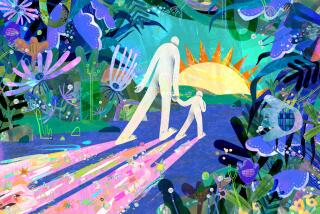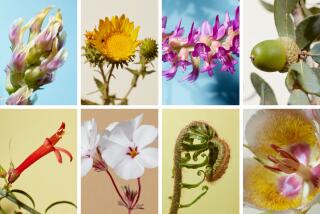Incredible images from Nikon’s microscope photo contest
Need a reminder that the world we live in is a totally incredible and visually bizarre place? You might consider looking under a microscope.
This week, Nikon announced the results of its annual Small World Photomicrography Competition and the winning images are insane.
In the photo gallery above you’ll find the top five winners including the first-place image of the spiral-shaped, golden-yellow colony of marine diatom -- a type of photo plankton that sprouts thin white bristles.
HI-RES PHOTOS: The seldom seen world of photomicrography
The photo measures just 1/2 a millimeter across, said photographer Wim van Egmond in an interview with the Los Angeles Times. He added that you can’t see this diatom colony with the naked eye. “If you had it in a jar of water and you held it up to the light, you could maybe see a little dot,” he said. “But that’s it.”
Van Egmond, who is a photographer that specializes in photomicrography, took this picture with the help of a light microscope from the 1970s. He laid the organism out on a glass slide, just like you remember from high school, but to keep it from being flattened by the thin plastic slip cover, he added a tiny dot of Vaseline on each corner of the slide before laying the cover down.
When he wants to poke the organism into a slightly better position, he uses a cat whisker, he said.
But van Egmund’s process isn’t all low-tech. That image you see above is actually a mosaic of 91 images that he stitched together through a computer program.
“With this high magnification, you don’t have any depth of field,” he said. “So I used a stacking technique, where I took a picture, and then focused a little lower, and each time, a different section of the organism is in focus. Then I stitch the focused parts together.”
Van Egmond is an artist, not a scientist, but many of the photos in the contest were taken by scientists at research institutions.
The other winning photographs shown above include a modernist-looking image of a painted turtle retina; a nightmarish marine worm; a paramecium like the one you might remember from your high school biology textbook rendered in amazing detail; and a neon hippocampal neuron receiving excitatory contacts.
And because I could not resist adding in a few more, you’ll also find a cartoonish veiled chameleon embryo showing cartilage in blue and bone in red, and the hyper-colored image of the adhesive pad on a foreleg of a ladybird beetle that kind of has an ‘80s vibe.
A full collection of images from the contest is available on our sister blog Framework.
If you agree science can be weirder than science fiction, follow me on Twitter for more stories like this.
ALSO:
Guppy sex proves the odd guy is in
Scientists identify new dolphin species in Australia
Bizarre gecko discovered in remote Australian rainforest






